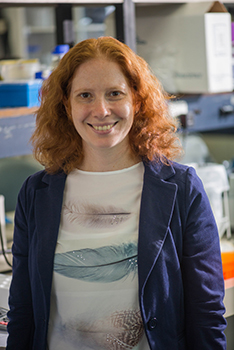 “Differential roles for DNAJ isoforms in HTT-polyQ and mutant FUS aggregation modulation revealed by chaperone network screens”, by Reut Shalgi, Assistant Professor, Rappaport Faculty of Medicine, Technion, Israel Institute of Technology.
“Differential roles for DNAJ isoforms in HTT-polyQ and mutant FUS aggregation modulation revealed by chaperone network screens”, by Reut Shalgi, Assistant Professor, Rappaport Faculty of Medicine, Technion, Israel Institute of Technology.
Abstract: Protein aggregation is a hallmark of many neurodegenerative diseases. In order to cope with misfolding and aggregation, cells have evolved an elaborate network of molecular chaperones, composed of different families. But while chaperoning mechanisms for different families are well established, functional and regulatory diversification within chaperone families is still largely a mystery.
Here we decided to explore chaperone functional diversity, through the lens of pathological aggregation. We revealed that different naturally-occurring isoforms of DNAJ chaperones showed differential effects on different types of aggregates. We performed a quantitative screen for chaperone modulators of two neurodegeneration-related aggregating proteins, the Huntington’s disease-related HTT-polyQ, and the ALS-related mutant FUS (mutFUS). Surprisingly, modulators of mutFUS aggregation were completely different than those of HTT-polyQ. Interestingly, we found that different naturally-occurring isoforms of DNAJ (Hsp40) chaperones had opposing effects on HTT-polyQ vs. mutFUS aggregation. The in-depth characterization of these isoforms led to new insights on the different chaperoning requirements by the two types of pathological aggregates, and their dependency on Hsp70. Our data unraveled distinct molecular properties required for aggregation protection in different neurodegenerative diseases, and revealed a new layer of complexity of the chaperone network elicited by naturally occurring J-protein isoforms, highlighting functional diversity among the DNAJ family.
Monday, November 30, 2020 at 9:30 am. Join by Zoom.
Hosted by Dr. Thibault Mayor